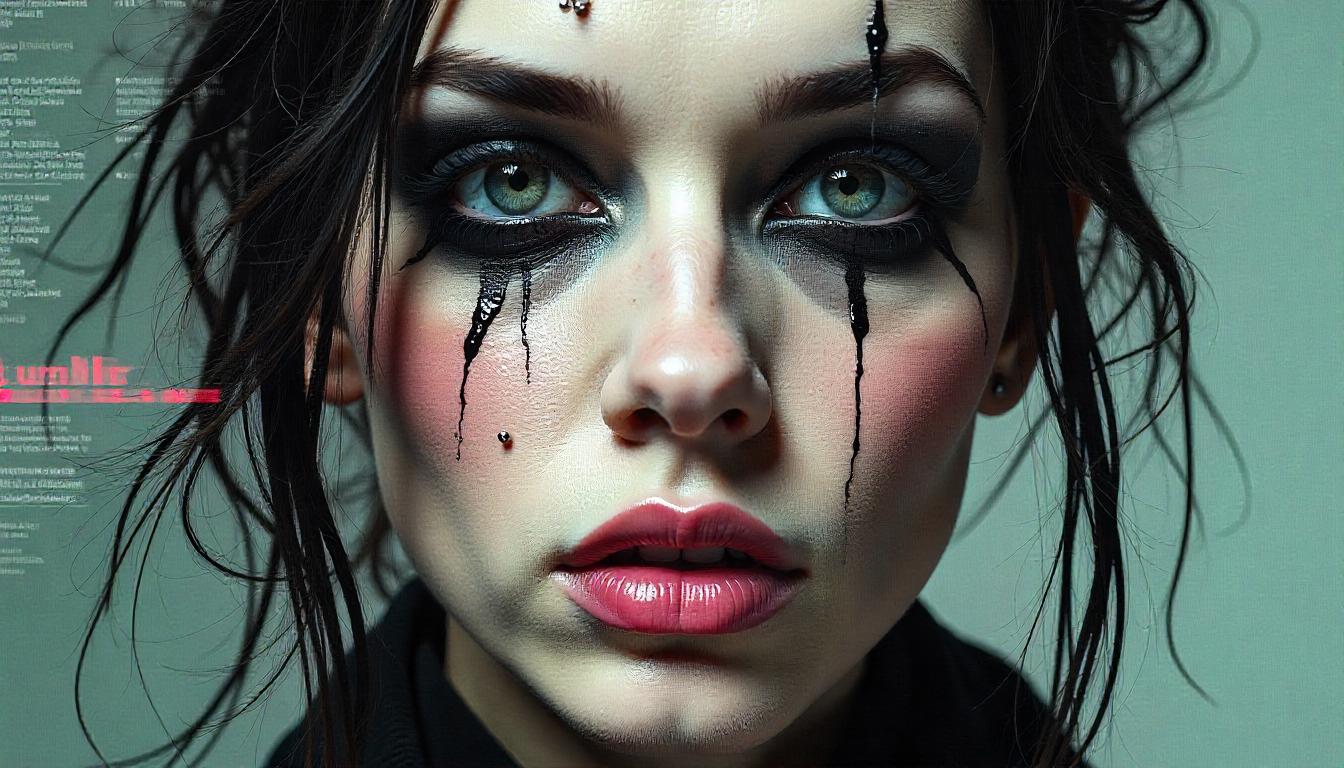There was a time—let’s say between 2010 and 2014—when the internet felt haunted. Not in the literal sense of ghost stories, but with the lingering trace of a collective yearning. Before the algorithm tamed us with homogenized feeds and monetized influence, there lived a messy, neon-lit wilderness called Tumblr. A liminal zone of flickering GIFs, infinite scroll, and an uncategorized ocean of subcultures that felt both ephemeral and deeply rooted. This was the era when aesthetic was a worldview, and curation was a form of identity construction.
Early Tumblr subcultures were not “niches” in the contemporary sense—they were moods made flesh through pixels, stitched together in the deep corners of the internet by kids with feelings too big for Facebook and aesthetics too niche for Instagram. Vaporwave melted into pastel goth. Grunge met net art. Scene kids retired their neon extensions in favor of glitchcore melancholia. The platform offered no rules, no real structure beyond tags and reblogs—just a blank space, infinitely long, where image, text, and song could collapse into something sacred.
The Scroll as a Ritual
To understand the power of these subcultures, one must understand the ritual of the Tumblr dashboard. Unlike feeds today, the scroll wasn’t something to “catch up on”; it was an immersive descent. You were pulled in, often at 2:43 a.m., headphones leaking the sound of Beach House or Crystal Castles, watching as an endless collage of sadness, irony, lust, and longing passed you by in JPEG form.
Everything was aesthetic. And aesthetics weren’t just about beauty—they were about atmosphere, about fragmented identity. Pages would blur together glitch art, raw lyric excerpts, fashion editorial scans, and NSFW photography filtered through a layer of catharsis. What we now call “moodboards” were living organisms then. They weren’t designed for brands or followers. They were designed for a fragmented version of the self.
The Rise of the Micro-Genre
From pale blogs (curated palettes of washed-out tones, sad girls, and cigarettes) to cyberpunk revivalists and “art hoe” collectives, subcultures thrived as visual movements. Each subculture had a soundtrack, a color palette, a language—half emoji, half e.e. cummings. You could find entire communities around a single emotion, or an abstraction: liminality, dissociation, yearning. Each blog was a shrine to its chosen aesthetic mythos.
The content was not original in the modern sense—Tumblr was about remixing. Reblogging itself was a form of creation. The same looping .gif of a woman crying in VHS grain might echo across hundreds of dashboards, picking up context like static electricity, altered slightly with each new caption, each new poetic fragment pasted underneath.
Glitched Poets and Digital Sorcery
Among these aesthetic enclaves, there were pockets of experimental digital poets who saw Tumblr not as a platform, but as a canvas. Pages like the now-defunct v3rb1son.tumblr pioneered what might now be considered a forgotten school of glitched poetics. Their posts resembled corrupted diary entries—text garbled by code, stanzas punctuated by ASCII ghosts, overlaid on grainy textures that looked like scanner malfunctions or VHS decay.
v3rb1son didn’t just write poetry—they performed it in the digital ether, layering meaning through font distortion, hyperlink decay, and purposeful ambiguity. These creators built meaning through absence, through what was broken. Their influence was quiet but wide-reaching, inspiring a brief wave of visual storytelling that reveled in aesthetic fragmentation and emotional noise. Today, these works are largely lost, the URLs inactive, the image hosts expired, the archives corrupted by time and corporate indifference.
Fade to Black (and Neon Pink)
The death of Tumblr subcultures came quietly. Some point to the 2018 adult content ban, but the rot set in earlier. As Tumblr’s popularity swelled, its wildness was diluted. Brands arrived. Influencers migrated. Instagram’s cleaner interface and rising dominance turned Tumblr from a creative refuge into a ghost town almost overnight. The dashboards slowed. The subcultures splintered. Some migrated to Discord servers or private Instagrams, others to Twitter threads or ephemeral zines. But many simply vanished, their last post timestamped like a forgotten epitaph.
In the post-Tumblr world, aesthetics became commodities. “Vaporwave” turned into playlist branding. “Grunge” became a marketing term. What had once been deeply personal, raw, and gloriously unstructured was now reissued through moodboard TikToks and Pinterest pins, stripped of their original soul.
In Memoriam
What remains of early Tumblr subcultures lives on in screenshots, in old zip files on broken laptops, and in the collective muscle memory of a generation that once knew how to feel through a dashboard. It exists in Tumblr’s half-functional search engine, in the occasional resuscitated tag, in a .png file that someone forgot to delete.
Tumblr’s subcultures were never about permanence. They were flickers in the stream—gorgeous, vulnerable, and momentary. And perhaps that’s why they mattered.
They were proof that, for a time, the internet wasn’t just a place we visited. It was where we became.


